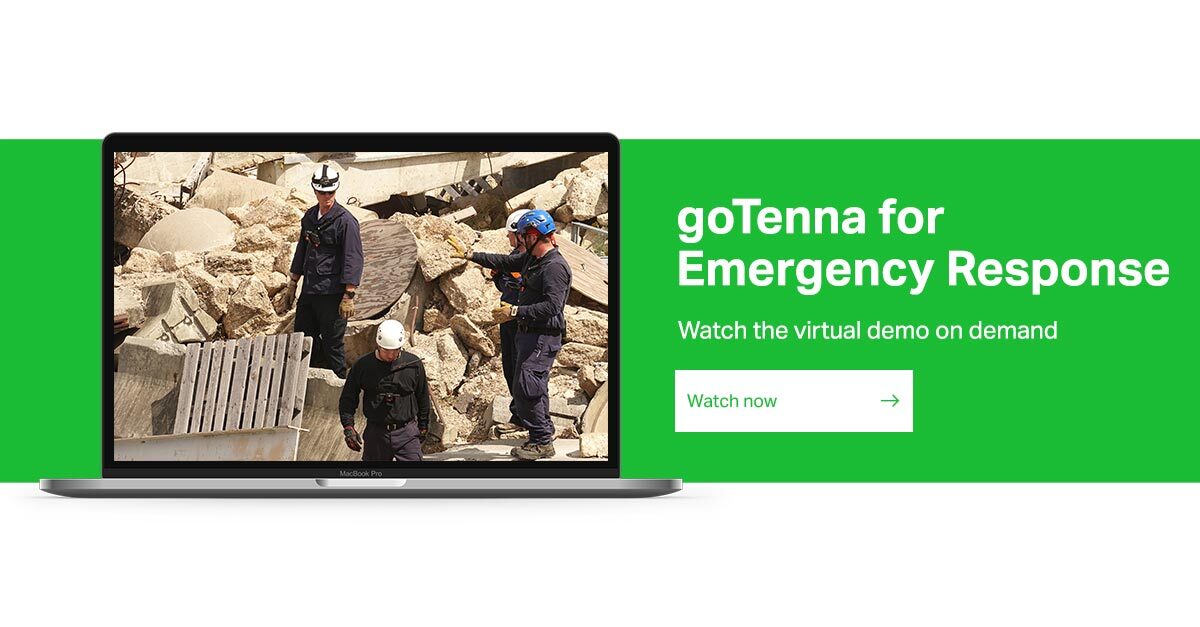Can mesh-enabled smartphones solve disaster response communications challenges in the COVID-19 era?

Former Federal Emergency Management Agency Administrator Craig Fugate recently published a whitepaper on disaster response communications in the COVID-19 era.
During his career at FEMA, Fugate heralded the use of mobile technology and social media as more and more communities — and their first responders — relied on wireless cellular networks for communication. Now as the coronavirus fully engages every state’s resources in the midst of an already record-breaking storm season, Fugate argues that the need for smartphone-centric emergency communications has never been greater.
Rapidly deploying “spontaneous” emergency volunteers
With new COVID-19 travel restrictions in place, traditional mutual aid and trained first responder resources may be overwhelmed or unavailable in the event of a secondary disaster. While FEMA has worked to incorporate “spontaneous volunteers” into emergency planning, Fugate notes the persisting communications challenges with untrained volunteers due to the nature of traditional Incident Command Structures and government-operated radio systems.
“In larger incidents where public-private partnership becomes inevitable, emergency managers simply do not have the time to train volunteers on the proper protocol and technical skills required for operating current communications equipment.”
As increasing numbers of medical professionals, truck drivers, and food service workers join the “new” emergency management workforce, Fugate discusses how agencies should look to intuitive mobile apps and the smartphones already in volunteers’ pockets as a means of interoperable communications.
Responding while social distancing
No matter who shows up on the front lines of a disaster, COVID-19 is also dictating a change in personal safety protocols. Agency response sites, such as mass care facilities, will now need to operate — and communicate — with new social distancing guidelines in place.
“Something as simple requiring face masks has led to anecdotal challenges where first responders receive unclear messages over conference calls and voice radio channels.”
Out of necessity, Fugate feels that text messaging through group-friendly and encrypted mobile apps may become a primary mode of communication where it hadn’t been previously.
Staying connected when towers go down
Even in the best of circumstances, traditional cell, wifi, and satellite communications networks are limited. In any disaster, emergency management agencies need to ensure redundant and resilient systems are in place.
“We need to embrace the reality that smartphones — not radios — are the common denominator for the “new” emergency management workforce. But we also need to make sure that they work.”
When cell networks fail or become congested, Fugate proposes that new mobile mesh networking technology can extend the resilience and utility of smartphones off the grid. For example, solutions like goTenna Pro pair with any iOS or Android mobile device and enable off-grid connectivity for situational awareness apps like ATAK.
In the response to COVID-19 and other secondary disasters, emergency management agencies are already adopting new tools and protocols that cover the most essential needs — to stay connected with everyone supporting the incident, in any environment — in the most cost-effective manner possible. For many agencies, that “new normal” may be a mesh-enabled smartphone.









No Comment